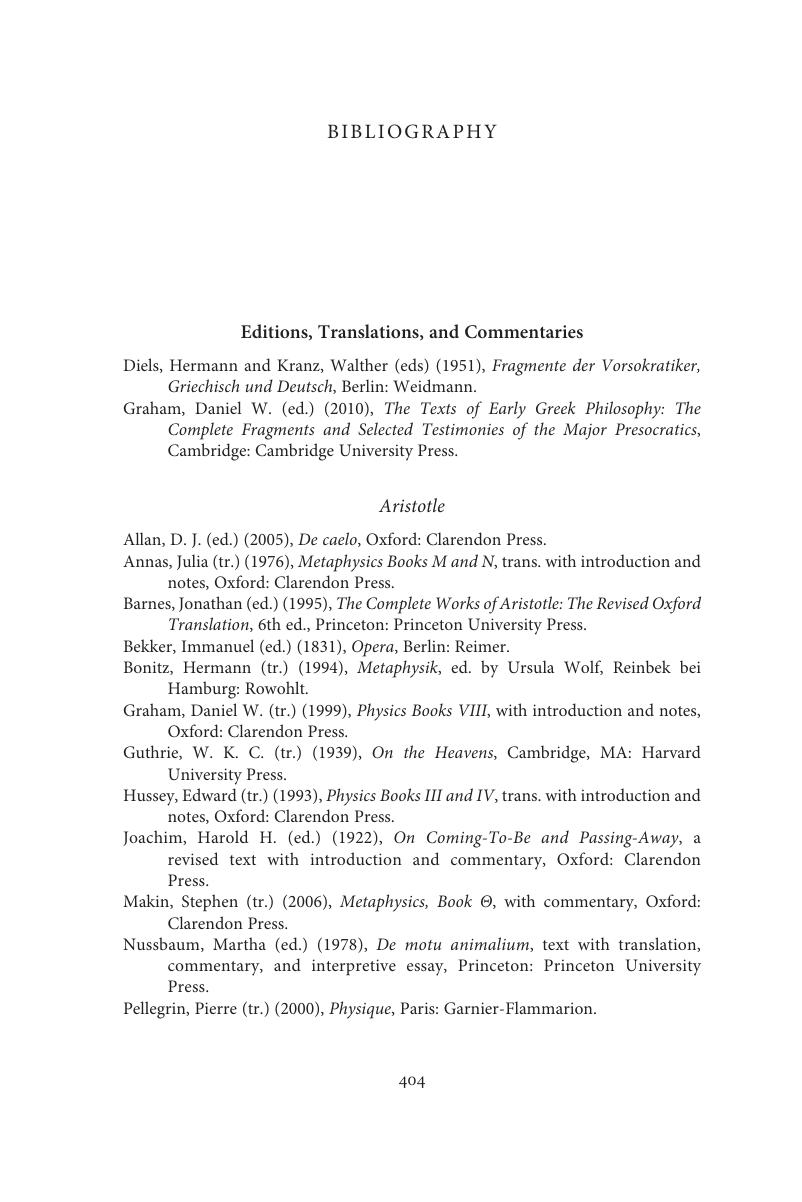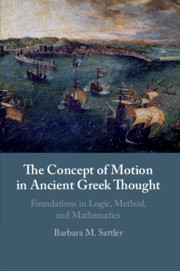Book contents
- The Concept of Motion in Ancient Greek Thought
- The Concept of Motion in Ancient Greek Thought
- Copyright page
- Contents
- Acknowledgements
- Introduction
- 1 Conceptual Foundations
- 2 Parmenides’ Account of the Object of Philosophy
- 3 Zeno’s Paradoxes of Motion and Plurality
- 4 The Atomistic Foundation for an Account of Motion
- 5 The Possibility of Natural Philosophy According to Plato I: The Logical Basis
- 6 The Possibility of Natural Philosophy According to Plato II: Mathematical Advances and Ultimate Problems
- 7 Aristotle’s Notion of Continuity: The Structure Underlying Motion
- 8 Time and Space: The Implicit Measure of Motion in Aristotle’s Physics
- 9 Time as the Simple Measure of Motion
- Bibliography
- Index Locorum
- General Index
- References
Bibliography
Published online by Cambridge University Press: 28 September 2020
- The Concept of Motion in Ancient Greek Thought
- The Concept of Motion in Ancient Greek Thought
- Copyright page
- Contents
- Acknowledgements
- Introduction
- 1 Conceptual Foundations
- 2 Parmenides’ Account of the Object of Philosophy
- 3 Zeno’s Paradoxes of Motion and Plurality
- 4 The Atomistic Foundation for an Account of Motion
- 5 The Possibility of Natural Philosophy According to Plato I: The Logical Basis
- 6 The Possibility of Natural Philosophy According to Plato II: Mathematical Advances and Ultimate Problems
- 7 Aristotle’s Notion of Continuity: The Structure Underlying Motion
- 8 Time and Space: The Implicit Measure of Motion in Aristotle’s Physics
- 9 Time as the Simple Measure of Motion
- Bibliography
- Index Locorum
- General Index
- References
Summary

- Type
- Chapter
- Information
- The Concept of Motion in Ancient Greek ThoughtFoundations in Logic, Method, and Mathematics, pp. 404 - 422Publisher: Cambridge University PressPrint publication year: 2020



